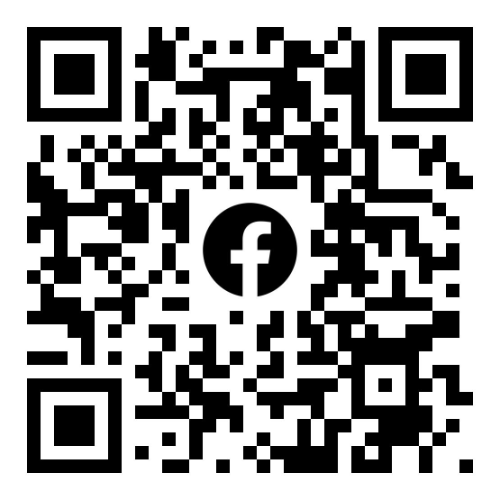Everything You Must Know About Mobile Data

In the digital age, mobile data has become as essential as electricity for powering our daily lives. From browsing the internet to streaming videos, mobile data enables connectivity anytime, anywhere. This article sheds some light on mobile data, providing a comprehensive understanding of its mechanics, usage, and management.
What Is Mobile Data?
Mobile data is a technology that enables smartphones and other devices to access the internet without needing a wired connection, leveraging the vast network of cellular towers. Unlike Wi-Fi, which connects devices to the internet through localized hotspots, mobile data taps into the cellular networks provided by telecommunications companies. This offers a broader range of coverage, allowing you to stay connected in places where Wi-Fi might not be available. It also ensures that internet access moves with you, making it the backbone of modern mobile communication.
What Is a Byte?
In digital technology, a byte stands as the fundamental unit of data. Composed of eight binary bits, each representing a zero or one, a byte can encode a single character, such as a letter or a number, in text documents. This might seem minuscule, but bytes are the building blocks of digital information, allowing for the compact representation of data we interact with daily on our computers and mobile devices.
What Is a kilobyte?
A kilobyte, equaling approximately 1,000 bytes, might appear small, yet it's crucial for understanding the scale of digital data. In the early days of computing, when storage space was at a premium, kilobytes represented significant storage capacity. Although we often deal with much larger files today, the kilobyte remains a key unit for measuring smaller data pieces, such as text files or emails. It's a testament to how far we've come in data storage and processing capabilities.
What Is a Megabyte?
A megabyte builds upon the kilobyte, containing about 1,000 kilobytes or one million bytes. This unit of measurement becomes relevant when discussing medium-sized files, like high-resolution photographs or lengthy documents. In the context of mobile data, understanding megabytes helps users gauge their data consumption when browsing the internet, downloading apps, or streaming music, offering a moderate snapshot of digital consumption.
What Is a Gigabyte?
A gigabyte, which amounts to roughly 1,000 megabytes, is a familiar term in the world of mobile data plans and digital storage. Representing a substantial volume of data, gigabytes are often used to quantify the storage capacity of smartphones and the data limits of mobile plans. For the average user, a gigabyte allows for streaming hours of video, browsing the web extensively, or storing thousands of documents and photos, marking a significant threshold in digital data usage.
What Is a Terabyte?
A terabyte consists of approximately 1,000 gigabytes, placing it at the higher end of the data measurement spectrum. Terabytes signify vast amounts of storage space, capable of housing extensive digital collections, including hundreds of thousands of photos, comprehensive libraries of videos and music, and complex databases. In mobile data, a terabyte is an almost unfathomable amount of consumption, but in data storage, it's becoming increasingly common as our digital footprints expand.
Byte Converter: Bytes to KB to MB to GB to TB
|
Unit of Measurement |
Equivalent |
Typical Usage Scenario |
|
Byte (B) |
1 Byte |
Storing a single character, such as 'A' or '9'. |
|
Kilobyte (KB) |
1,000 Bytes |
A short email or a small text file. A page of plain text might be about 2KB. |
|
Megabyte (MB) |
1,000 Kilobytes |
A medium-quality photograph, about 1 minute of music at a standard bitrate, or a 1,000-page document. |
|
Gigabyte (GB) |
1,000 Megabytes |
Around 2 hours of SD video streaming, or about 200 songs, or several hundred photographs. |
|
Terabyte (TB) |
1,000 Gigabytes |
Large-scale digital libraries, extensive collections of high-definition videos, or comprehensive backups. |
What's the Difference Between Data Roaming and Mobile Data?
Data roaming occurs when your phone uses a cellular network outside your primary service provider's coverage area, often leading to additional charges. Mobile data, however, refers to data transmission via your provider's network within its coverage.
How Does Mobile Data Differ From WIFI?
Wi-Fi provides internet access through a fixed wireless access point, usually with faster speeds and no data limits. Mobile data, conversely, offers more flexibility and coverage but can be subject to data caps and slower speeds.
Is Mobile Data the Same as Phone Storage Data?
Mobile data refers to the internet data used over a cellular network, whereas phone storage data pertains to the information stored on a device, such as apps, photos, and files.
How to Know My Phone's Data Usage
For Android Users
- Open Settings: Navigate to the "Settings" app on your Android device.
- Data Usage: Look for an option labeled "Data Usage," "Network & Internet," or something similar. The exact naming can vary depending on your device's manufacturer and Android version.
- View Data Usage: Within this section, you'll find a breakdown of your data consumption. You can see your total usage over your current billing cycle and which apps are consuming the most data.
- Set Data Warning or Limit: Android also allows you to set warnings for when you approach your data limit and even set a hard limit to stop data usage once you reach a certain threshold.
For iOS (iPhone) Users
- Open Settings: Start by opening the "Settings" app on your iPhone.
- Mobile Data: Scroll down and tap on "Mobile Data" or "Cellular," depending on your iOS version and region.
- View Data Usage: Here, you'll see your total data usage for the current period. iOS does not automatically reset this statistic each billing cycle, so you may need to manually reset it to keep accurate track.
- Monitor Individual Apps: This section also shows the data usage per app, allowing you to identify which apps are using the most data.
How Much Mobile Data Do I Need Per Month?
Your mobile data needs depend on your usage patterns. Basic browsing and email checking require less data, while streaming and online gaming consume more. Below is a detailed chart to help you
figure out how much mobile data is needed for a month:
|
Usage Category |
Activities Included |
Estimated Data Needs per Month |
|
Light Usage |
Browsing websites, checking emails, using social media (minimal video content) |
1-3 GB |
|
Moderate Usage |
Regular social media with videos, music streaming |
4-8 GB |
|
Heavy Usage |
HD video streaming, online gaming |
10 GB to Unlimited |
|
Professional Use |
Video conferencing, cloud services, large file downloads/uploads |
15 GB to Unlimited |
|
Specialized Use |
Downloading/uploading large files (high-res images, videos) |
Varies (High or No Data Cap) |
Why Is My Phone Using So Much Data?
High data usage can result from background app refreshes, automatic updates, or streaming high-quality video. Monitoring app usage and adjusting settings can mitigate excessive consumption.
How Do I Stop My Phone From Using So Much Data?
If you're looking to rein in your phone's data usage, several strategies can help you control consumption without significantly impacting your mobile experience:
- Limit Background Data for Apps: Dive into your phone's settings to restrict background data for apps that don't need to update in real time. This step can drastically cut down on passive data usage.
- Utilize Wi-Fi Whenever Possible: Make a habit of connecting to Wi-Fi networks in your home, workplace, or public areas. This simple change ensures that data-intensive tasks don't eat into your cellular data plan.
- Adjust App Settings: Many apps offer options to reduce data usages, such as lowering streaming quality in video or music apps. Exploring and adjusting these settings can significantly decrease data consumption.
- Set Data Usage Limits and Alerts: Both Android and iOS platforms allow you to set warnings for when you're approaching your data limit, with Android also offering the option to automatically disable mobile data once a certain limit is reached.
- Manual Updates: Change your settings to manual updates for both your apps and operating system. By doing so, you can choose to update only when connected to Wi-Fi, avoiding the data drain of automatic updates.
- Monitor Data Usage Regularly: Keep an eye on your data usage through your phone's built-in tools or your carrier's app. Regular monitoring can help you identify which apps or activities are using the most data and adjust your habits accordingly.
15 FAQs About Mobile Data, Storage, and Usage
1. What is the difference between a gigabyte (GB) and a gibibyte (GiB)?
A gigabyte (GB) traditionally equals 1,000 megabytes (MB) following the decimal system, commonly used in data plans and storage devices. A gibibyte (GiB), equaling 1,024 MB, follows the binary system, more accurate for computer memory and file sizes.
2. How is data storage calculated in computers?
Data storage in computers is often calculated using the binary system, where:
1 Kilobyte (KB) = 1,024 Bytes
1 Megabyte (MB) = 1,024 KB
1 Gigabyte (GB) = 1,024 MB
1 Terabyte (TB) = 1,024 GB
3. How is mobile data measured?
Mobile data is typically measured in decimal units, aligning with the International System of Units (SI):
1 Kilobyte (KB) = 1,000 Bytes
1 Megabyte (MB) = 1,000 KB
1 Gigabyte (GB) = 1,000 MB
1 Terabyte (TB) = 1,000 GB
4. Why do storage devices use decimal measurements?
Storage devices like hard drives, SSDs, and USB flash drives use decimal measurements (1 GB = 1,000 MB) for simplicity and to align with the SI units. This approach makes it easier for consumers to understand and compare storage capacities.
5. Will I use more data if I stream a video in HD compared to SD?
Yes, streaming in high definition (HD) consumes more data than standard definition (SD). HD video can use up to 3 GB per hour, while SD video uses about 1 GB per hour.
6. Is it better to use Wi-Fi or cellular data?
Wi-Fi is typically faster and doesn't count against your cellular data plan, making it ideal for heavy use like downloading large files or streaming in high definition. Additionally, Wi-Fi doesn't incur extra charges, making it a cost-effective choice for most online activities. However, cellular data offers the advantage of broader coverage, allowing you to stay connected even when Wi-Fi isn't available. It's perfect for on-the-go activities like navigating with maps, checking email, and staying connected while traveling.
7. Will I be charged for data when using Wi-Fi?
No, Wi-Fi usage does not affect your cellular data plan. It's a separate form of internet access provided through local networks. This means any data sent or received over Wi-Fi will not count towards your mobile data limit. You can freely download, stream, and browse without worrying about consuming your cellular data or incurring additional charges.
8. What You Can Do With 100MB Mobile Data
With 100MB of mobile data, you can manage several basic internet activities quite efficiently. For instance, you can browse the web for up to 4 hours if you're visiting text-heavy websites with minimal images. Sending around 100 emails without attachments is also feasible, making it suitable for daily correspondence. Additionally, you could make about 50 social media posts with photos, allowing you to stay connected and share moments. However, streaming video or music, downloading large files, or using data-intensive apps will quickly deplete 100MB.
9. How much data is 1GB?
1GB of data offers a considerable amount of internet usage across various activities. It allows for roughly 14 hours of web browsing, catering to daily needs for news, social networking, and research. Streaming HD video consumes more data, with 1GB supporting about 1 hour of playback, making it suitable for watching a couple of episodes of your favorite show. For social media enthusiasts, 1GB can handle around 200 photo uploads, letting you share important moments without restraint.
10. How much cellular data is good for a month?
An average user typically needs 2 to 5 GB of mobile data per month. However, heavy users who stream video or use data-intensive applications may require 10 GB or more.
11. Is 5GB of data enough for a month?
For moderate internet users, 5GB per month is generally adequate. This amount supports regular web browsing, social media use, streaming music, and watching a few hours of video content. If your online activities are concentrated on text-based content, emailing, and occasional multimedia consumption, 5GB should serve you well. However, if you frequently stream HD video or use data-intensive apps, you might find this limit restrictive.
12. Is 30 GB a lot for a month?
Yes, 30 GB per month is a substantial amount of data, catering to the needs of heavy internet users. This volume supports extensive streaming of music and HD video, online gaming, large downloads, and frequent use of data-heavy applications. If your lifestyle or work requires you to spend significant time online, or if you prefer streaming over downloading content, 30 GB will ensure you can do so without constantly worrying about exceeding your data cap.
13. How many GB is a 2-hour movie downloaded?
The data usage for downloading a 2-hour movie depends on the video quality. For standard definition (SD), you might use between 1 and 3 GB, while high definition (HD) content can require 4 to 6 GB. Ultra HD or 4K content, if available, would consume even more.
14. How many hours does it take to use 1GB of data?
The duration of consuming 1GB of data varies greatly by activity. Streaming HD video can use up 1GB in just about an hour, making it one of the quickest ways to use data. In contrast, streaming music is far less data-intensive, where 1GB might last for up to 25 hours. Regular web browsing and social media use without video streaming are also efficient on data, providing many hours of usage from 1GB.
15. Is 1.2 TB of data enough for a month?
For the vast majority of households, 1.2 TB of data per month is more than sufficient. This amount can support multiple devices streaming HD video, playing online games, downloading files, and browsing the internet simultaneously without nearing the cap. It's well-suited to today's high digital consumption patterns, accommodating even the needs of tech-savvy families or shared living spaces with heavy internet use.
Read More
- The Power Duo of Eufy Cameras & Prepaid SIM Cards– Eiotclub
- Choosing the Right Industrial SIM Card for Your IoT Devices– Eiotclub
- Which SIM Cards Are Supported by 4G Routers? A Simple Explainer– Eiotclub
- How to Buy a SIM Card for a Security Camera in the United States (2024– Eiotclub
- Best IoT SIM Cards for Reolink 4G Cameras: 4G Data Only Prepaid SIM Ca– Eiotclub


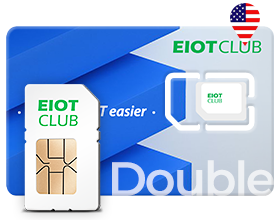
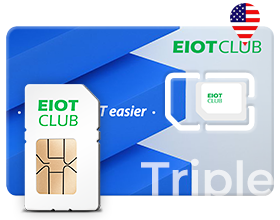
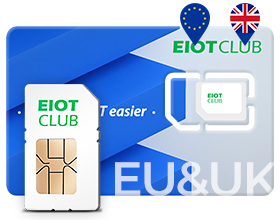
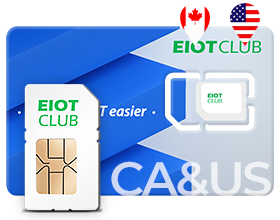
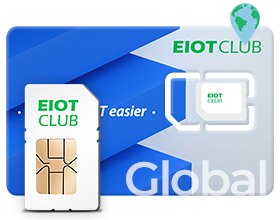

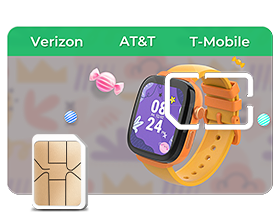
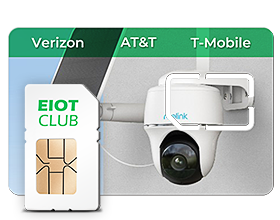

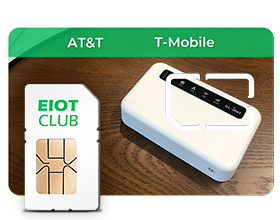
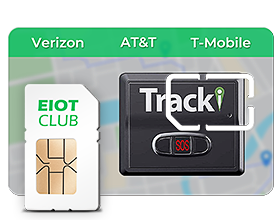


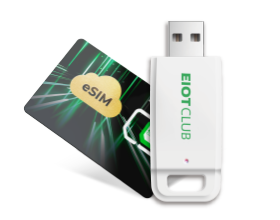









 Black Friday
Black Friday





